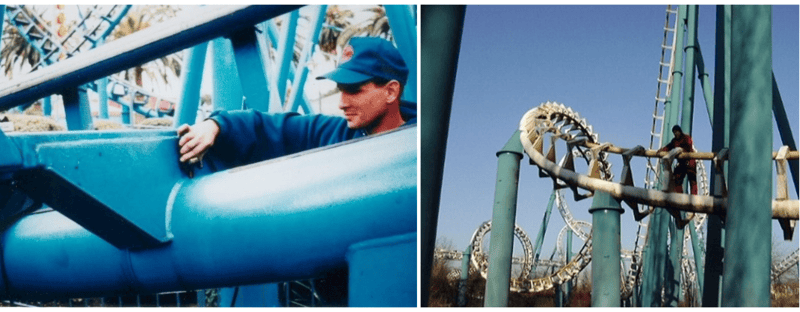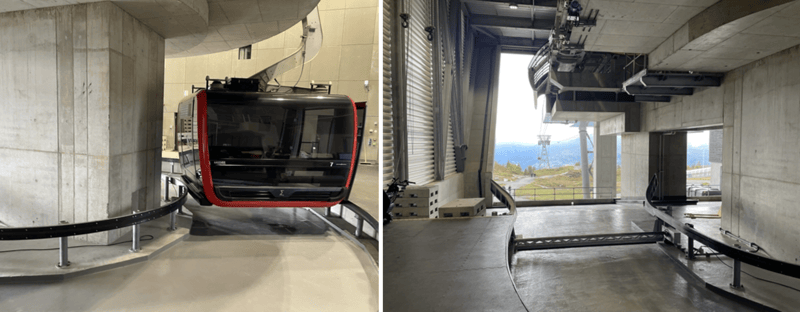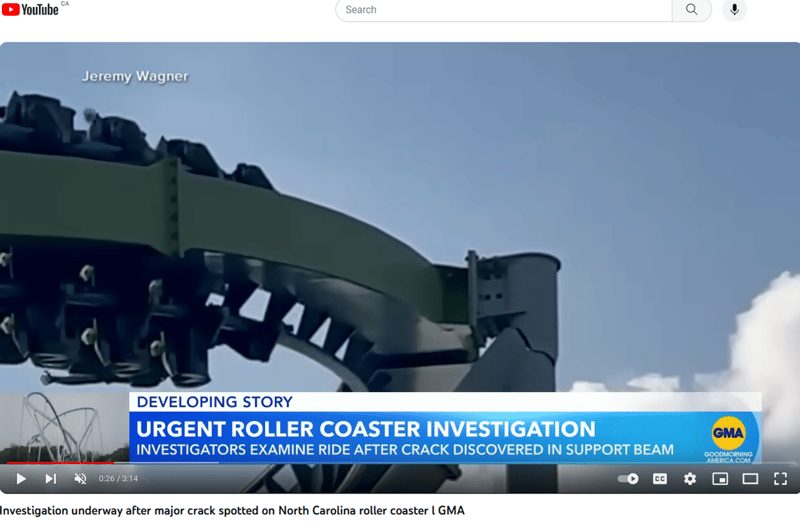ACFM: The Tech Revolutionizing Recreational Entertainment Safety
ACFM stands out as a remarkable NDT technology, initially forged in the early 1990s as a response to a dire need within the oil industry during the 1980s, epitomized by the Alexander L. Kielland tragedy. ACFM revolutionized inspections by swiftly detecting and sizing surface-breaking cracks in complex welded geometries (e.g., offshore facilities), all while leaving coatings undisturbed. Its adaptability allowed for reliable examinations even in the most challenging environments, from underwater locales to rope-access only areas.

ACFM's far-reaching impact extends well beyond the confines of the oil and gas sector, encompassing industries grappling with similar inspection challenges. Among these, recreational entertainment venues stand out due to intricate structures subject to repetitive stress, thus presenting a heightened risk of fatigue-induced cracks. Just like offshore structures, ensuring the structural integrity of amusement park rides and ski lifts is of utmost importance for public safety. Robust NDT techniques, such as ACFM, play a central role in the verification and maintenance efforts of these structures. Since the early 2000s, ACFM has introduced an integrated solution that includes pencil probes for inspecting complex weld geometries and compliant array probes for butt welds. This comprehensive approach ensures that all weld inspections can be carried out using ACFM, enhancing safety standards across the board.
Despite its potential, the entertainment industry often relies on conventional inspection methods, such as visual checks and magnetic particle inspection (MPI). These methods demand coating removal and surface preparation, making the inspection process lengthy, costly, and inefficient. Affected by human factors, they may fail to detect cracks early or cover assets swiftly, occasionally leading to unsettling incidents like the recent case of hair-raising cracks discovered on the Fury 325 ride in North Carolina in 2023.
ACFM offers a range of additional advantages:
- Minimal Surface Preparation: ACFM requires no extensive surface cleaning or sandblasting, saving time and resources (unlike traditional methods like dye penetrant inspection and MPI).
- ACFM provides robustness, ease of use, and forgiveness during inspections, with resilience to lift-off and geometric variations. It ensures high detection probability with minimal human factor influence and offers reliable, noise-immune results, thanks to distinctive defect signatures.
- ACFM inspections and scans are well structured and saved as computerized data that facilitates peer-review, reliable documentation, and decision-making processes.
- ACFM provides precise length and depth data for defects, even under thick coatings (up to 10mm or 0.4 inches), reducing the need for time-consuming grinding.
- ACFM significantly reduces maintenance downtime, guaranteeing year-round operation of theme park rides.
- Remote Accessibility: ACFM is adaptable for remote access situations, eliminating the necessity for scaffolding. Rope access technicians can employ it effectively in hard-to-reach areas.
- ACFM equipment is weatherproof and operates reliably over a broad temperature range, making it well-suited for use in diverse environmental conditions where rides and ski lifts are installed.

ACFM, in its simplest form, employs single-element probes and is renowned for its ability to enhance inspection productivity by up to 60% when compared to traditional visual methods such as penetrant testing or magnetic particle inspection. Recent advancements in ACFM technology have pushed the boundaries even further, offering game-changing benefits to the entertainment industry by increasing inspection speeds and expanding asset coverage. Eddyfi Technologies introduced an ACFM fillet weld probe and ACFM galvanized steel inspection solution. Read on to learn more.
Fillet Weld Array Probe
As fillet welds are one of the most inspected components, the fillet weld array probe precisely addresses the industry’s needs. The ACFM sensor arrangement covers the weld toes, cap, and heat-affected zones simultaneously, providing comprehensive coverage in a single pass. Compared to traditional ACFM inspections, this innovative approach increases inspection productivity by a factor of three while retaining all the inherent advantages of ACFM technology. Notably, this probe incorporates state-of-the-art crack length and depth sizing technology, eliminating the need for cumbersome apparatus and operations such as encoders or surface markings.
%20and%20the%20extent%20of%20its%20single%20pass%20coverage%20(right).png?width=800&height=313&name=ACFM%20fillet%20weld%20probe%20(left)%20and%20the%20extent%20of%20its%20single%20pass%20coverage%20(right).png)
ACFM fillet weld probe (left) and the extent of its single pass coverage (right)
Galvanized Steel Solution
Another ACFM innovation that addresses a common challenge is the inspection of galvanized steel structures—a realm where conventional inspection methods often struggle. This galvanized steel solution not only enhances inspection efficiency but also opens up new possibilities for enhancing safety in various applications, including ski lifts. Ski lift structural components are frequently galvanized for corrosion protection, and this ACFM solution presents a unique opportunity to reliably assess their structural integrity.

Technology demonstrations have shown the capability to quickly and easily detect and size cracks in these structures, whether in service or installed. The potential benefits extend beyond ski lifts, offering the industry a powerful tool to enhance safety and asset management in a wide range of applications.

Amigo™ 2 inspecting the integrity of galvanized ski lift structural elements
In summary, these two groundbreaking ACFM innovations have the potential to revolutionize asset integrity management in recreational entertainment sites. They greatly enhance inspection productivity, enable reliable assessment of galvanized structure integrity, streamline inspections, and provide trustworthy data for audits and ongoing monitoring. Their adaptability and efficiency make them the preferred choice for enhancing the safety of theme park rides and similar structures, ensuring both operators and visitors can enjoy peace of mind. For more information on ACFM technology or to access instant pricing, please visit our Eddyfi Academy or online eStore.
Contact our team of experts to discuss how these innovations can power your next inspection project!






